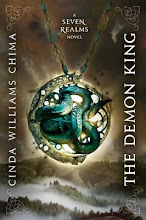A second reason your story may fall short is if you are delivering your story too much in narrative instead of scene. Your story may involve lots of characters and lots of conflict, but you are not allowing your reader to experience it properly.
Consider a movie, and then consider somebody telling you about that movie. It takes a lot less time to have someone tell you the movie than to experience it. Not only that, it’s boring, right?
Make sure the important events in your story happen onstage, with a full cast and dialogue. It takes more space, but it’s much more effective.
Here’s a pivotal scene delivered in narrative:
Raisa was just getting ready to leave Jemson’s office when a scruffy-looking boy burst in. Amon recognized him as Han “Cuffs” Alister, streetlord of the Raggers gang, who was suspected of several murders. But when Amon tried to arrest Cuffs, the streetlord grabbed Raisa and threatened to cut her throat.

That doesn’t take much space, does it? Not very interesting, is it?
Here’s the same events in scene:
They turned toward the door, but before they could reach it somebody barreled through it. It was a young man, Raisa’s age, or a little older, with muddy red-brown hair, dressed in clan leggings and shirt.
“Jemson! Three of the Raggers have been nabbed by the bluejackets. Seems they mean to make an example of….” His voice trailed off when he saw the people gathered in the room. “Oh. Sorry, Sir. I didn’t know you had company.”
His eyes flicked to Averill, then Amon, and widened in alarm.
He recognizes them, Raisa thought.
“Let’s discuss this later, Hanson,” Jemson said quickly, jerking his head toward the door.
Hanson began backing from the room, but Amon said, “Wait! What’s that about Raggers?”
The boy blinked at him, blank-faced. “Raggers? I didn’t say nothing about Raggers.”
“Yes, you did,” Amon said, walking purposefully toward Hanson. “Have we met? You look familiar.”
“Ah, no,” the boy said. “Not likely.” He was tall, nearly as tall as Amon, though more slender in build, with brilliant blue eyes. His face bore evidence of a recent beating. His right eye was blackened and there was a blue and yellow bruise over one cheekbone. His right forearm was splinted, but he didn’t favor it. He seemed to be trying to keep his face turned away from them, as if he was embarrassed by his injuries.
This must be one of Jemson’s students, Raisa thought, with a rush of sympathy.
“What happened to you?” she asked, moving closer so she could examine his face at close range. She touched his arm. “Who did this?”
Hanson flushed. “Wasn’t nothing. Just…my da. Gets mean sometimes when he’s in his cups.”
Just then Amon’s hand snaked forward. He gripped the boy’s splinted arm and raked back his sleeve, exposing a wide silver cuff. “So, Hanson,” he said. “I think we have met, after all. You ever go by the name Cuffs?” he said.
Cuffs? Raisa looked from Amon to the other boy. Wasn’t that the gangleader who’d killed all those people?
Then it seemed like everything happened at once. The boy slammed his free fist into Amon’s face and twisted away with the ease of long practice. Amon drew his sword and stepped between the boy and the door, yelling for the guard. And then the boy called Cuffs grabbed hold of Raisa, drawing her back tight against him. She felt the prick of a blade at her throat and tried hard not to swallow.
“Hanson, no!” Speaker Jemson shouted, pale with horror.
“Now then,” Cuffs said, close to her ear. “Back off or I cut the girlie’s throat.” His voice shook a little, with fear or nerves or excitement—Raisa couldn’t tell.
Raisa thought of the six, dead in the street. Tortured, they said. Done by this pretty blue-eyed boy holding the knife. –The Demon King
Which is more interesting?
Delivering action in scene will not only make your work longer, but will engage readers more effectively.






















